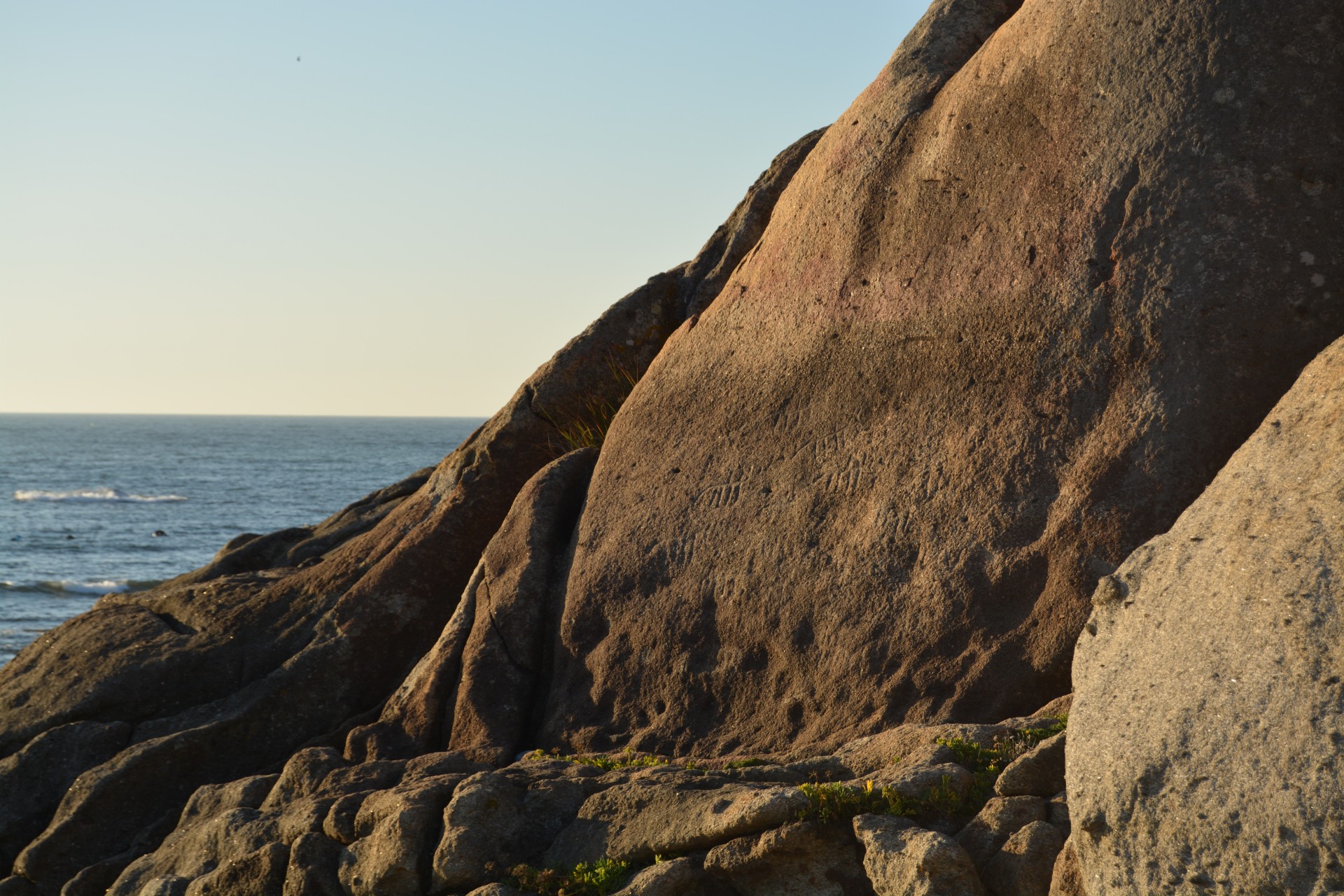Marinheiro Windmill
Points of interest
Fornelos Rock art
The Fornelos rock art is engraved on a granite outcrop on the coastline, on the southern base of the Montedor promontory on the beach locally known as Fornelos. It is made up of three sub vertical panels facing south, east and west, respectively.
Upon analysing the group of engraving we are able to see snake-like forms, groups of cup and ring marks, rings and grooves which resemble horseshoes and schematic zoomorphic figures such as cervids (deer). These engravings were made by pecking and then abrading the stone.
The engraved outcrop is a fine grain granite rock formation, with two micas and porphyritic texture, transverse fissures and irregular crevices which are large though shallow. The rock has a reddish discontinued colouring due to the existence of iron oxides and the weathering of the biotite.
The lower section of the panel, facing south, next to a small step presents a group of horses, almost all facing the sunset. Some are mounted while others seem to be carrying something on their backs. The manner in which they have been represented seems to indicate that they were in movement. On the panel facing east, there is a zoomorphic figure that resembles a dog. On the panel facing west, there are horses and horsemen and an anthropomorphic figure with outstretched arms suggesting an orant.
These engravings have been classified as belonging to the Northwest Peninsular rock art, group 1, designated as ancient or classical, according to, in a general sense, their location and decorative characteristics. Due to the type of figures or motifs, the rock art in these locations most likely date back to the late Bronze Age or Iron Age.
These engraved panels are important pre and proto-history sites, classified as National Interest Monuments (Decree no. 26-A/92, DR, 1st Serie-B, no. 126 of 1 June 1992).

